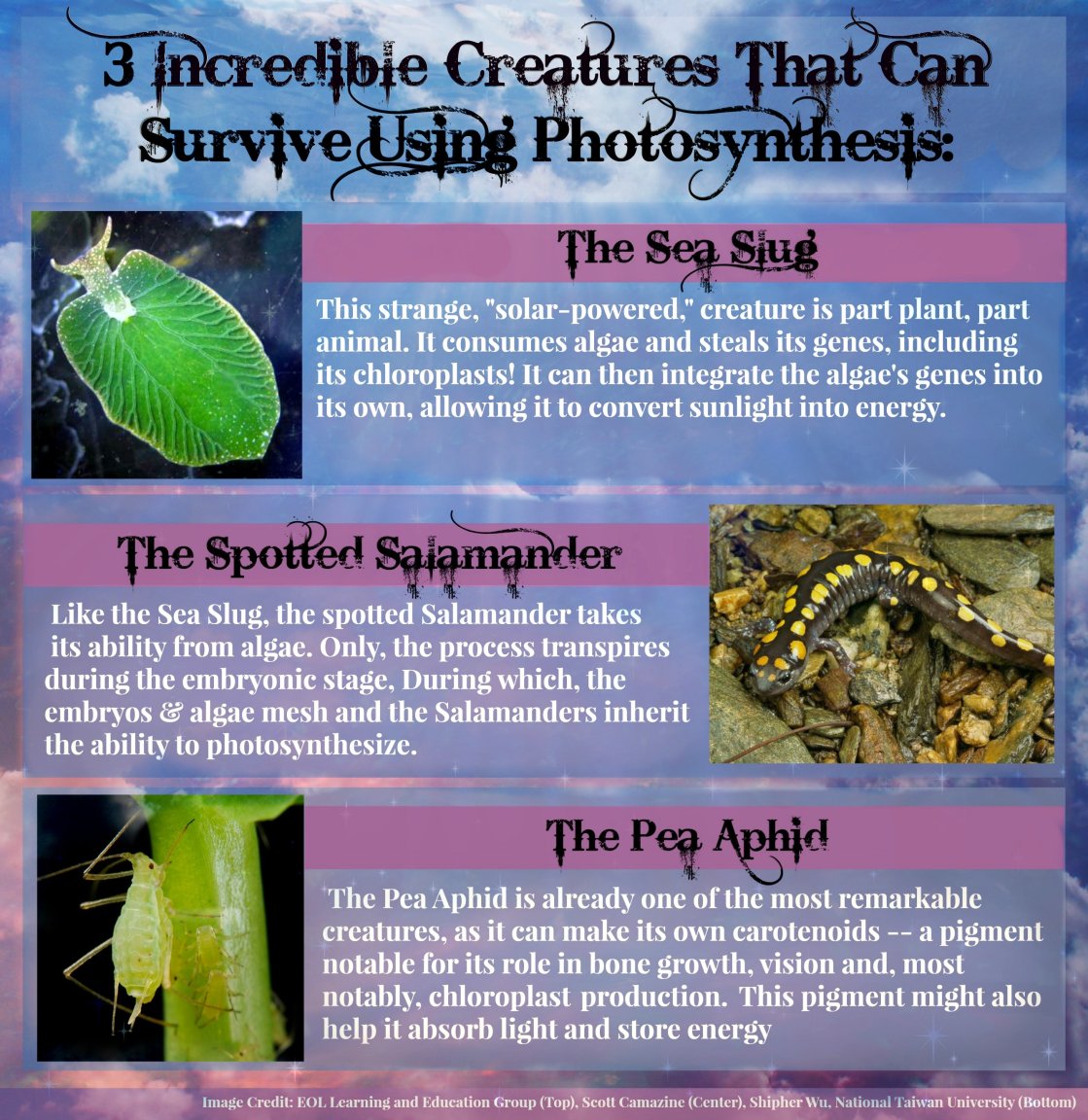
You have probably heard about a trend called breatharianism, a ‘diet’ claiming that humans can sustain themselves without food and water, surviving on only light and air. This is a potentially lethal practice and several practitioners have, quite obviously, died because of it. Animals and humans are heterotrophic organisms, unable to produce their own food, thus they depend on organic sources to provide it.
Plants, on the other hand, are autotrophic organisms that are able to produce food out of inorganic matter. With photosynthesis, they convert water, minerals and sunlight into glucose and oxygen. Plants use glucose as their source of energy needed for growth and life. Their role in the life cycle is important, because they serve as a source of food and oxygen for other living organisms.
But nature never fails to surprise us, sometimes ”the laws” can be broken. Scientists have found some animals that can, just like plants, survive on photosynthesis:

The Green Sea Slug:
Sea Slug (Elysia chlorotica) is an extraordinarily beautiful slug living in the waters of the east coast of the United States and Canada. It’s distinctive feature is green colored, leaf-shaped body. The slug eats algae (Vaucheria litorea), but it’s not it’s only source of energy!

It seems like this slug stole photosynthetic organelles (chloroplasts) and some genes from the algae, which enables them to live without eating! They can spend their days laying out in the sun and, just like plants and green algae, get their energy through photosynthesis. The symbiosis that enables algae’s chloroplasts to work for slug is called kleptoplasty.
The Pea Aphid:
Pea Aphid (Acyrthospihon pisum) is an insect living worldwide that feeds on plants (legumes). Even though they may look like any other insect, unpleasant or even terrifying to some, they truly are amazing.

Pea Aphids are capable of producing carotenoids, pigments found in chloroplasts (photosynthetic organelles) and chromoplasts, giving them orange-reddish colour and helping chlorophyll with photosynthesis. In aphids, carotenoids are responsible for their colour, some of them don’t have it and are white. It also seems like carotenoids serve not only as a beauty compound, but they can also be used to convert sunlight into energy. However, these correlations are not yet clear and well researched.
The Spotted Salamander:

Spotted Salamander (Ambystoma maculatum), just like the sea slug, it lives in symbiotic relationship with algae. They were found in embryos of the animal. The salamander’s embryos are found in clear colored eggs, laid by the females on the underwater plants, close to the surface, so that the light can reach them.
It seems like green algae help embryos get much-needed energy for growth and development from sunlight, while providing an extra source of energy (this, in turn, increases their chances of survival). Spotted Salamanders are the highest developed animal species and the only ones among all vertebrae, that can directly benefit from photosynthesis. Usually, the immune system of highly developed organisms will prevent such symbiotic behavior.
These special animals just show how complex the living world is, and that the line between plants and animals may not be so well-defined. It makes us wonder where evolution will take us in the next few billions of years (if we last that long) Maybe one day, even humans could benefit from photosynthesis. Just imagine the possibilities that this kind of life opens.